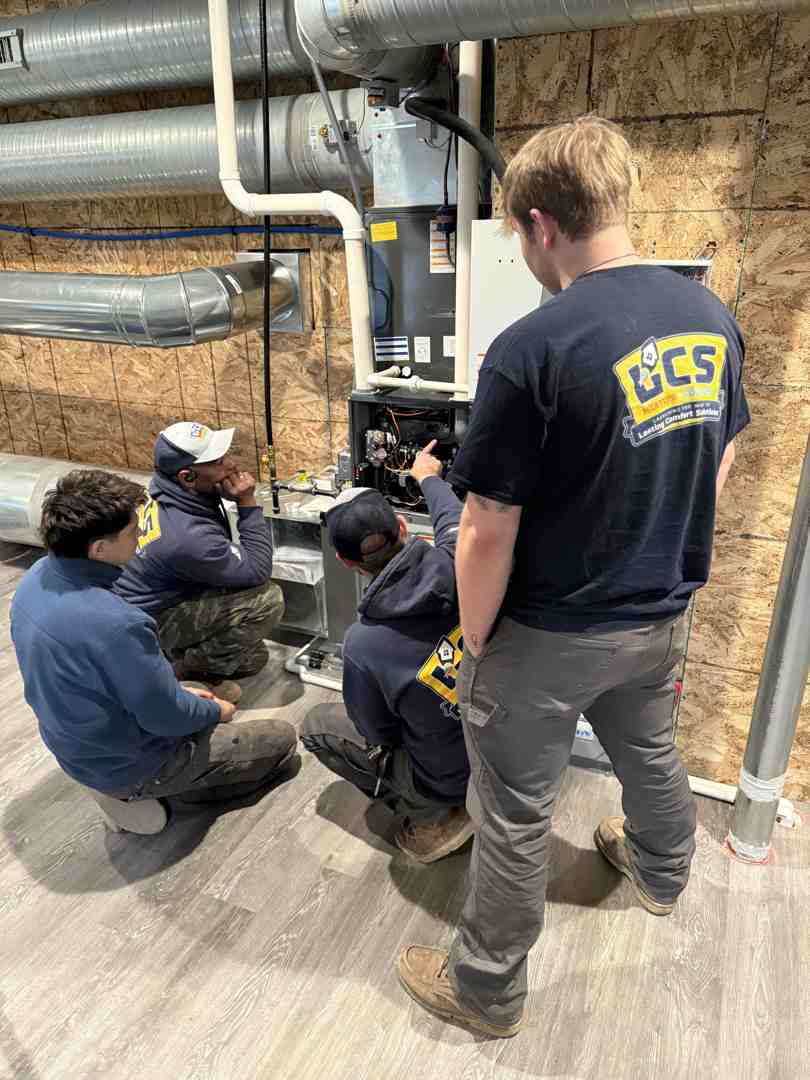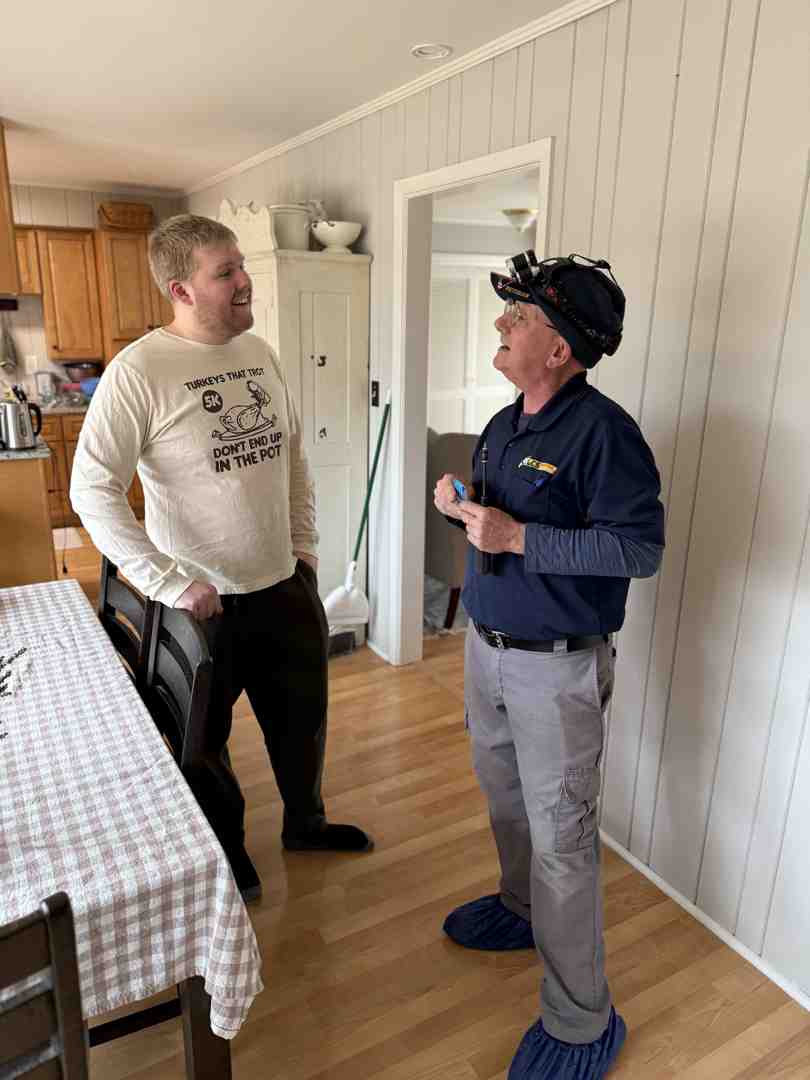Filter Finesse: Mastering Your HVAC Filter Change
Why a Clean Filter is Your HVAC System's Best Friend
An HVAC filter change is one of the simplest yet most critical maintenance tasks for any homeowner. A clogged filter can significantly reduce your system's efficiency, forcing it to work harder and increasing the risk of costly breakdowns. More importantly, it can allow dust, dander, and mold to circulate through your home.
This simple task can save you hundreds in energy costs and prevent premature system failure. The impact is immediate:
- Clean filters can improve system efficiency by up to 15%.
- Regular changes extend your HVAC system's lifespan.
- Proper filtration reduces allergens and improves indoor air quality.
- You'll notice lower energy bills.
Allocating a few minutes every 1-3 months for a filter replacement helps keep your Indianapolis home comfortable and your system healthy.
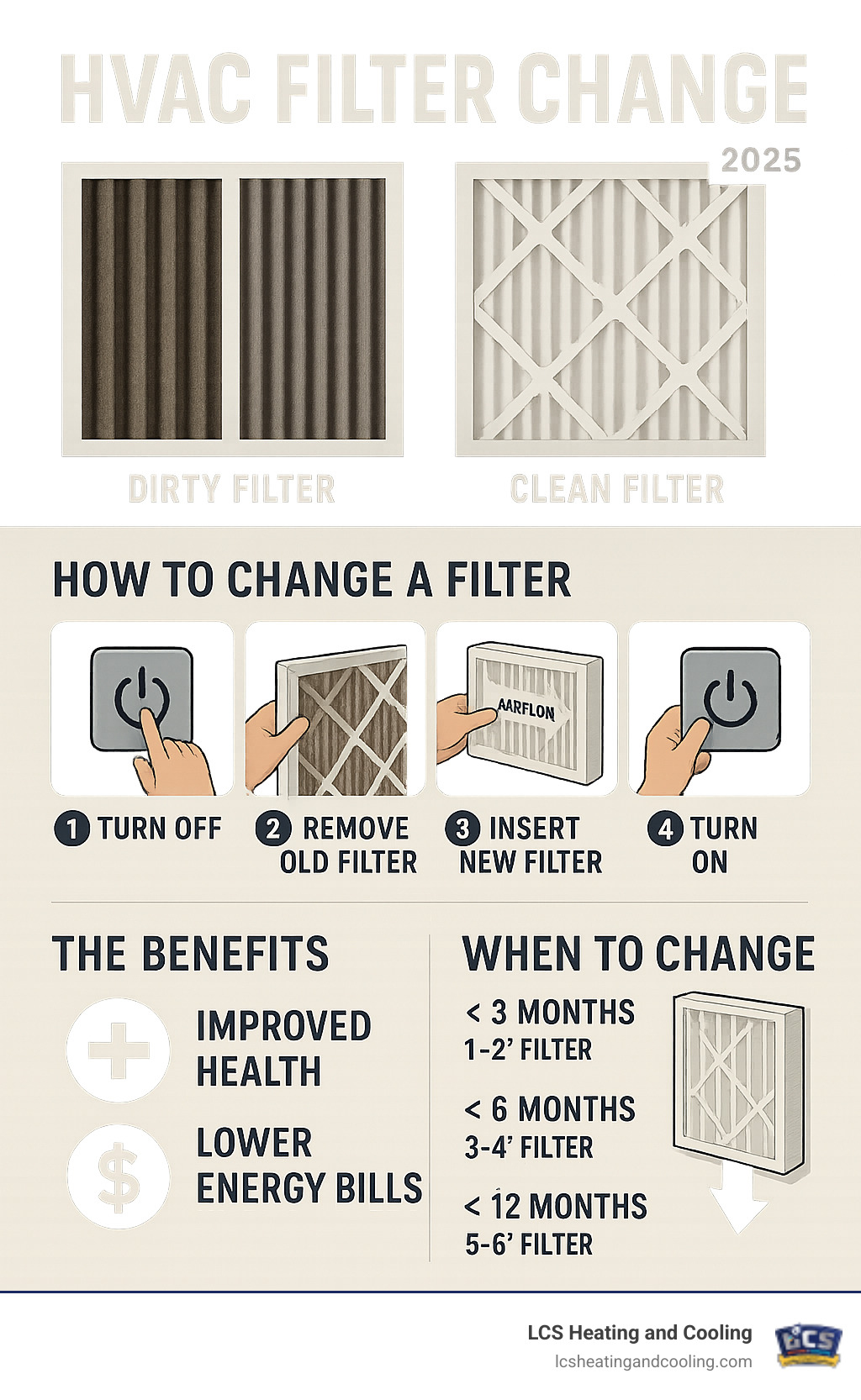
Understanding the Importance of a Regular HVAC Filter Change
Your HVAC filter is the primary line of defense for both your system and your indoor air quality. Neglecting it can cause a cascade of problems. A clogged filter restricts airflow, forcing your furnace or air conditioner to work much harder. This strain increases energy consumption, raises your utility bills, and accelerates wear and tear on critical components, potentially leading to expensive repairs or a complete system failure.
Beyond mechanical issues, a dirty filter compromises your health. When it can no longer trap contaminants like dust, pollen, and pet dander, these particles circulate freely in your home. This can aggravate allergies, asthma, and other respiratory conditions. Furthermore, a dirty, damp filter can become a breeding ground for mold, which can then be distributed throughout your home by the HVAC system, posing serious health risks.
Signs Your Air Filter Needs Replacing
Your HVAC system will give you clues when it's time for a change. Learning to spot them can save you time and money.
- Visible Dirt and Dust: If the filter is discolored or caked with a visible layer of debris, it's time for a replacement.
- Increased Household Dust: Noticing you have to dust more often is a sign your filter is no longer trapping airborne particles effectively.
- Reduced Performance: If your system runs longer to heat or cool your home, or if you notice hot and cold spots, restricted airflow from a dirty filter is a likely cause.
- Strange Noises: Whistling or humming sounds can indicate the system is straining to pull air through a clogged filter.
- Higher Energy Bills: An unexplained spike in your utility costs often points to a dirty filter forcing your system to work overtime.
If you're experiencing these symptoms, check your filter. For more tips on easily missed filters, see our guide on The 3 Filters Homeowners Forget to Check in Winter.
Choosing the Right Filter for Your Home
Choosing the right air filter doesn't have to be complicated. The key is to match the filter's size and performance level to your specific HVAC system and household needs.
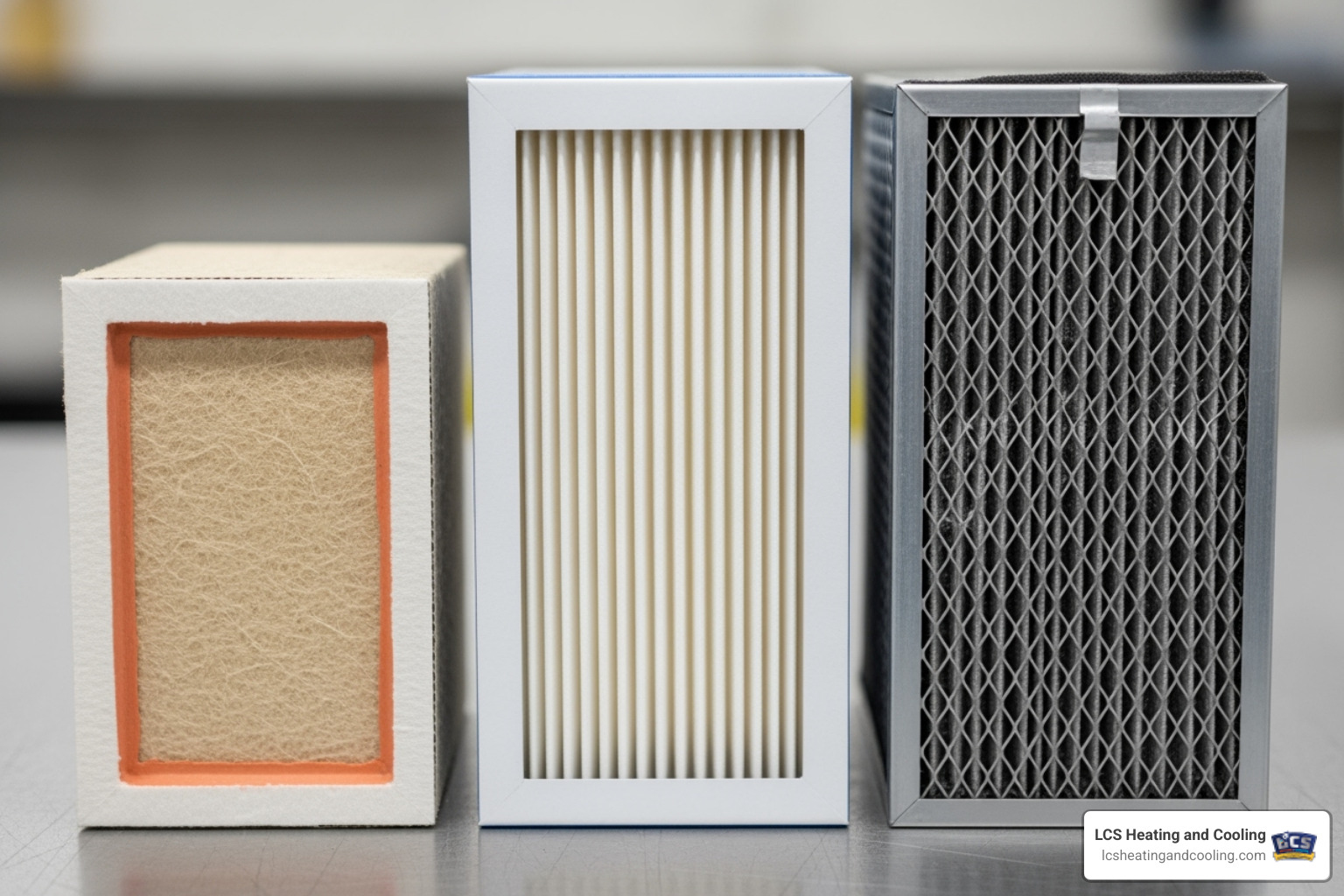
First, you must get the filter size correct. An ill-fitting filter allows air, dust, and debris to bypass the filter entirely, defeating its purpose.
Next, understand MERV ratings (Minimum Efficiency Reporting Value). Ranging from 1 to 20, this number indicates how effectively a filter captures airborne particles. However, a higher MERV rating also means more airflow resistance. Using a filter with a rating that's too high for your system can restrict airflow, reduce efficiency, and strain components.
Filter costs vary, from inexpensive basic filters to premium options. The goal is to find a balance between effective filtration and your budget for regular replacements. For a deeper dive into MERV, the EPA offers a great resource: What is a MERV rating?.
Decoding Filter Types and MERV Ratings
Here's a breakdown of common filter types to help you choose:
- Fiberglass Filters (MERV 1-4): These are the most basic and inexpensive option. They protect your HVAC system from large debris like lint and dust but do little to improve indoor air quality. They typically need to be replaced every 30 days.
- Pleated Media Filters (MERV 5-13): The most common choice for residential use, these filters capture smaller particles like pollen, pet dander, and mold spores. They offer a great balance of filtration and airflow efficiency and usually last up to 90 days.
- Washable Filters (MERV 1-4): An eco-friendly option that can be cleaned and reused. However, they must be cleaned thoroughly and dried completely to prevent mold growth, which can be a significant drawback.
- True HEPA Filters (MERV 17-20): These offer the highest level of filtration, capturing 99.97% of tiny particles. While excellent for those with severe allergies, their high airflow restriction makes them unsuitable for most standard residential HVAC systems without professional modification.
For most Indianapolis homes, a filter with a MERV rating between 8 and 11 provides a good balance of cleaner air and system efficiency. If you have pets or allergies, a MERV 13 may be beneficial, but always check your system's manual to ensure it can handle the increased resistance. A filter that's too restrictive forces your system to work harder, increasing energy use and risking damage. Learn more about our hassle-free approach in our article: HVAC Filters: Adding Simplicity and Convenience.
Finding the Correct Filter Size
Getting the right size is crucial and simple.
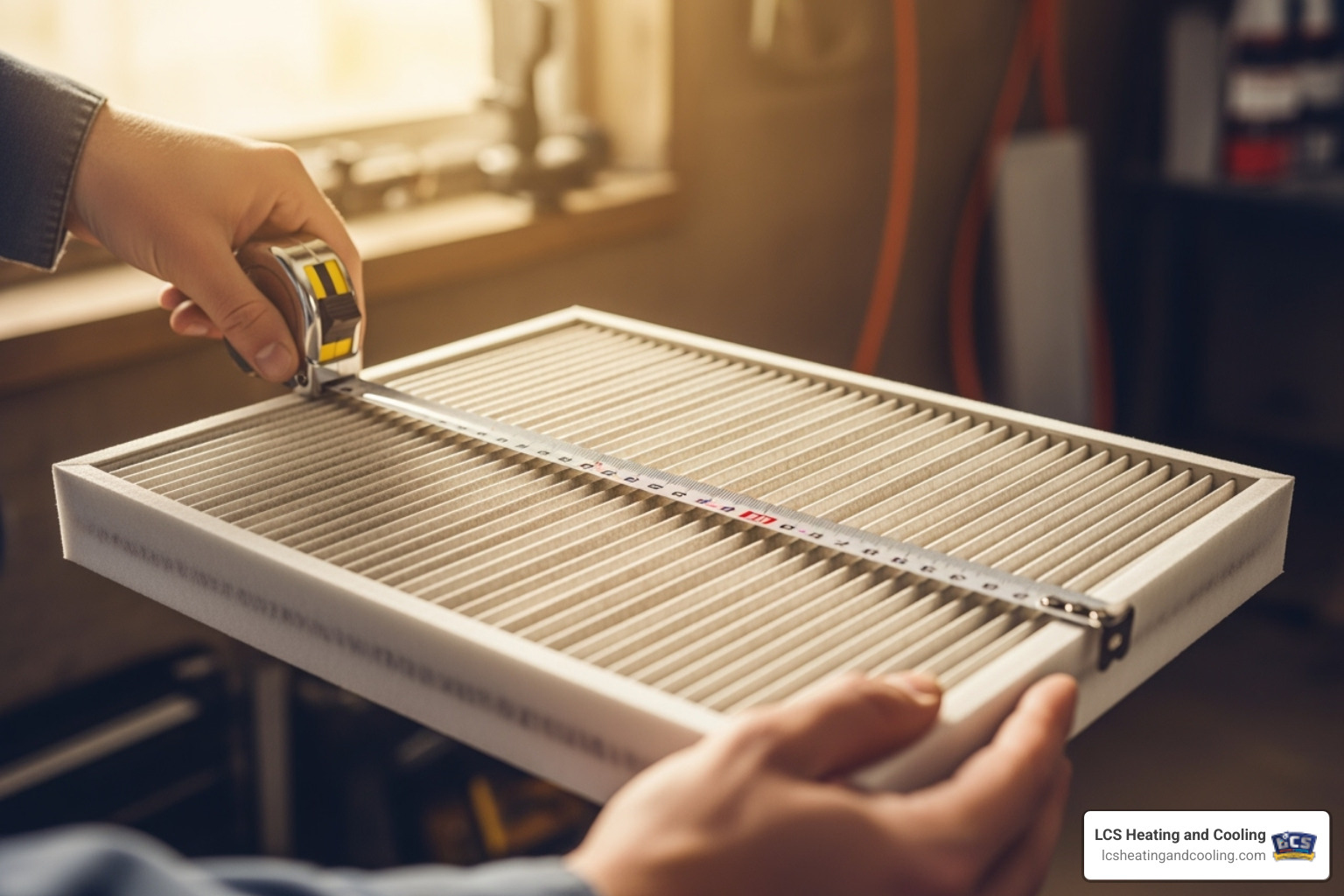
- Check your existing filter: The dimensions (e.g., 20x25x1) are usually printed on the cardboard frame.
- Consult the owner's manual: Your system's manual will specify the correct filter size.
- Measure the filter slot: If the size isn't printed on the old filter, use a tape measure to find the length, width, and depth of the filter compartment.
Common sizes include 16x25x1, 20x25x1, and 16x25x4. The filter should fit snugly without any gaps to ensure all air passes through it for proper cleaning.
Your Step-by-Step Guide to a DIY HVAC Filter Change
An HVAC filter change is a quick and satisfying home maintenance task that immediately benefits your comfort, your wallet, and your system's health.
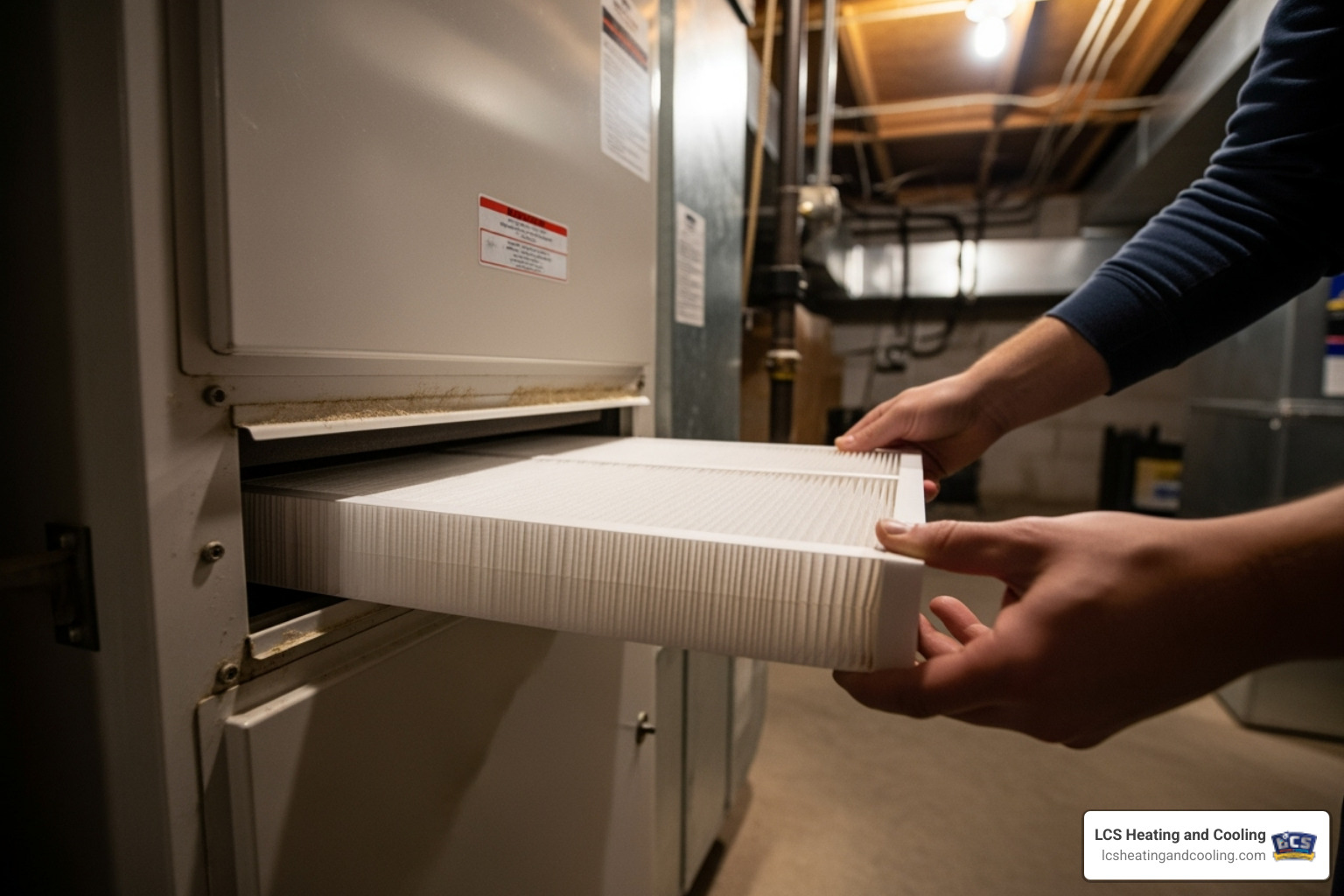
Before you start, prioritize safety. Always turn off your HVAC system at the thermostat or the main power switch near the indoor unit. For tools, you'll just need the new filter and a marker to write the date on it. Some units may require a screwdriver to open the access panel.
Locating the filter is usually easy. It's typically in a slot near the blower motor, where the return air duct connects to the furnace or air handler. Some homes have filters inside large return air vents on a wall or ceiling. If you have multiple return vents, you may have multiple filters.
The 5 Simple Steps for Replacement
Follow this foolproof guide to change your filter like a pro:
- Turn off the HVAC system. This is a critical safety step. Set your thermostat to "off" or use the power switch.
- Locate and open the filter compartment. Find the access panel and slide it open or unclip it.
- Remove the old filter and note the airflow arrow. Gently slide the old filter out. Look for the arrow printed on its frame, which indicates the direction of airflow.
- Insert the new filter correctly. The arrow on the new filter must point in the same direction as the old one—toward the furnace or air handler. Slide it in, ensuring a snug fit with no gaps.
- Close the compartment and turn the system back on. Secure the access panel, then restore power at the thermostat. Use a marker to write the date on the new filter's frame as a reminder for the next change.
Factors Influencing Your HVAC Filter Change Schedule
The standard "every three months" rule is just a guideline. Your ideal schedule depends on several factors. It's best to check your filter monthly to see how dirty it is.
- Household Size & Pets: More people and pets mean more dust and dander, requiring more frequent changes. A pet can shorten a filter's life by about 30 days, so pet owners may need to change filters every 30-60 days.
- Allergies or Asthma: If anyone in your home has respiratory issues, changing the filter monthly is crucial for maintaining clean indoor air.
- Local Air Quality: Urban pollution, construction, and high pollen counts in Indianapolis can clog your filter faster.
- System Usage: During peak heating and cooling seasons, your system runs more, so the filter will collect debris more quickly and need to be checked more often.
A visual check is the best way to know when a change is needed. If it looks dirty, replace it. For more seasonal tips, see our AC Maintenance Tips for Indianapolis Homeowners.
Beyond the Filter: Total HVAC System Health
A regular HVAC filter change is a vital first step, but comprehensive system care ensures long-term performance and reliability for your Indianapolis home.
Professional maintenance is like a wellness check-up for your system. A trained technician can identify and fix potential issues with refrigerant levels, electrical connections, and coils before they lead to a breakdown. This preventative care is key to avoiding emergency repairs.
Other important maintenance tasks include:
- Sealing Air Leaks: Leaks in your ductwork waste conditioned air, increase energy bills, and pull in unfiltered air from attics or crawl spaces.
- Cleaning Vents and Registers: Regularly vacuuming or wiping down vents and registers prevents dust buildup and ensures free airflow.
- Monitoring Humidity: Proper humidity levels prevent mold growth and improve comfort. Your HVAC system helps, but a separate humidifier or dehumidifier may be needed.
Combining these practices with regular filter changes protects your investment, improves efficiency, and keeps your family healthy. Learn more about the benefits in our guide on Regular HVAC Service Benefits.
When to Call a Professional
While a filter change is a simple DIY task, some situations require professional expertise. It's smart to call for help when you encounter these issues:
- Difficult-to-Access Filter: If your filter is in a cramped crawl space or high up on a unit, let a pro handle it safely.
- Signs of Mold: If you see mold on the filter or in the unit, it indicates a moisture problem that needs professional diagnosis to prevent spreading spores.
- Persistent Underperformance: If your system still struggles with poor airflow or uneven temperatures after a filter change, there's likely a deeper issue.
- Unusual Noises or Smells: Grinding, banging, or burning odors are signs of serious mechanical problems that require immediate professional attention.
At LCS Heating and Cooling, we know some problems go beyond a simple filter. Our 7-Star Concierge Service is here to diagnose the issue and fix it right. See what skipping professional maintenance can cost you: Skip AC Maintenance Cost Explained.
Frequently Asked Questions about HVAC Filters
We get a lot of questions about HVAC filters from Indianapolis homeowners. Here are answers to the most common ones to help you master your HVAC filter change routine.
What happens if I don't change my HVAC filter?
Neglecting your filter leads to several problems. A clogged filter restricts airflow, forcing your system to work harder. This causes:
- Higher Energy Bills: The system uses more electricity to compensate for the blockage.
- Increased Wear and Tear: Strain on the blower motor and other components leads to premature failure and costly repairs.
- Poor Performance: You'll experience uneven heating and cooling throughout your home.
- Poor Indoor Air Quality: The filter stops trapping dust, dander, and other pollutants, which then circulate in your air and can worsen allergies and asthma.
Can I use a filter with a higher MERV rating than my old one?
While a higher MERV rating means it captures more particles, it also creates more airflow resistance. Most residential HVAC systems are designed for filters in the MERV 8-13 range. Using a filter with a rating that is too high can strain your system's fan motor, reduce efficiency, and potentially cause damage like frozen coils. It's like making your system try to breathe through a thick blanket.
Before upgrading, always check your HVAC system's manual or consult a professional. At LCS Heating and Cooling, we can help you find the right balance between air quality and system performance.
How do I clean a reusable or washable filter?
Cleaning a washable filter requires care to be effective and safe.
- Vacuum: First, gently vacuum the filter with a brush attachment to remove loose dust and debris.
- Rinse: Take the filter outside or to a utility sink. Use a low-pressure water stream to rinse it in the opposite direction of normal airflow. This pushes particles out instead of deeper into the filter.
- Wash: If needed, use a mild detergent and a soft brush to gently scrub away grime. Rinse thoroughly to remove all soap residue.
- Dry Completely: This is the most critical step. Allow the filter to air dry completely before reinstalling it. A damp filter will quickly grow mold and mildew, which is hazardous to your health.
Master Your Home Comfort with Proper Maintenance
Congratulations! By mastering the HVAC filter change, you've taken a simple but powerful step toward better air quality, lower energy bills, and a longer lifespan for your system. In just a few minutes every 1-3 months, you protect a major home investment while keeping your family healthy and comfortable.
This easy DIY task puts you in control of your home's comfort. Your Indianapolis home will reward you with consistent performance and lower utility bills.
Of course, not every HVAC issue can be solved with a new filter. If strange noises, uneven temperatures, or other problems persist, our 7-Star Concierge Service is here to help. At LCS Heating and Cooling, we empower homeowners with knowledge for routine tasks while serving as your trusted partner for more complex issues.
Our team serves Indianapolis, Carmel, Fishers, Lawrence, Noblesville, and Zionsville with a commitment to clear communication and lasting comfort solutions. We'll diagnose the problem, explain your options, and ensure your home comfort is restored.
When you need professional care, we're ready. Schedule your professional AC repair in Indianapolis today and experience what true concierge service feels like.
